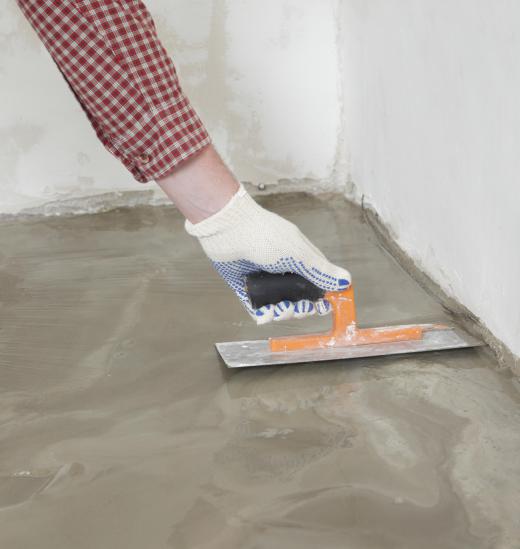A Schmidt hammer is a tool that can test the compressive strength of concrete. These tools are also referred to as rebound hammers due to the way the mechanism operates. A typical design consists of a handheld cylinder that contains a smaller, spring loaded rod. The strength of a concrete structure can be determined by striking it with the metal rod and then examining the rebound. A Schmidt hammer may have a digital readout or an analog scale that the operator needs to read and interpret manually.
In order to obtain accurate results from a Schmidt hammer, a number of conditions must be met. The concrete needs to have finished setting, which means it typically must be two weeks to over a month old, depending on conditions. If the concrete is still green, it will have excessive give and may not return useful readings. Concrete that is over two months old may need to be prepared by grinding away some of the surface material. The surface also has to be smooth and clean or the results can be inaccurate.

There are a few other variables that can modify the outcome of a rebound hammer test. The results of a test can change slightly depending on whether the tool is held horizontally, used to test a concrete floor, or used to strike the bottom side of a slab. This can manifest in a reading that is slightly too high or too low. The thickness of the material being tested can also be important.
After the concrete has been verified to be the proper age and the surface has been prepared, the Schmidt hammer may be used. This process typically involves releasing the hammer rod and then pressing it into the concrete. The operator can slowly increase the pressure applied until a mechanism inside the hammer activates and strikes the rod against the concrete. This is usually automated by the tool, and the operator will only need to hold it steady while reading a scale on the body of the hammer. A digital readout may show the exact compressive strength, or the operator might need to examine a mechanical scale.
The spring or other internal components inside a Schmidt hammer may wear over time, resulting in inaccurate readings. This is typically fixed by calibrating the device from time to time. Some type of metal anvil that has a known compressive strength will usually be used for this type of calibration work. If the hammer is used on one of these anvils and returns a different result than expected, the device can be calibrated to give the correct readings.
